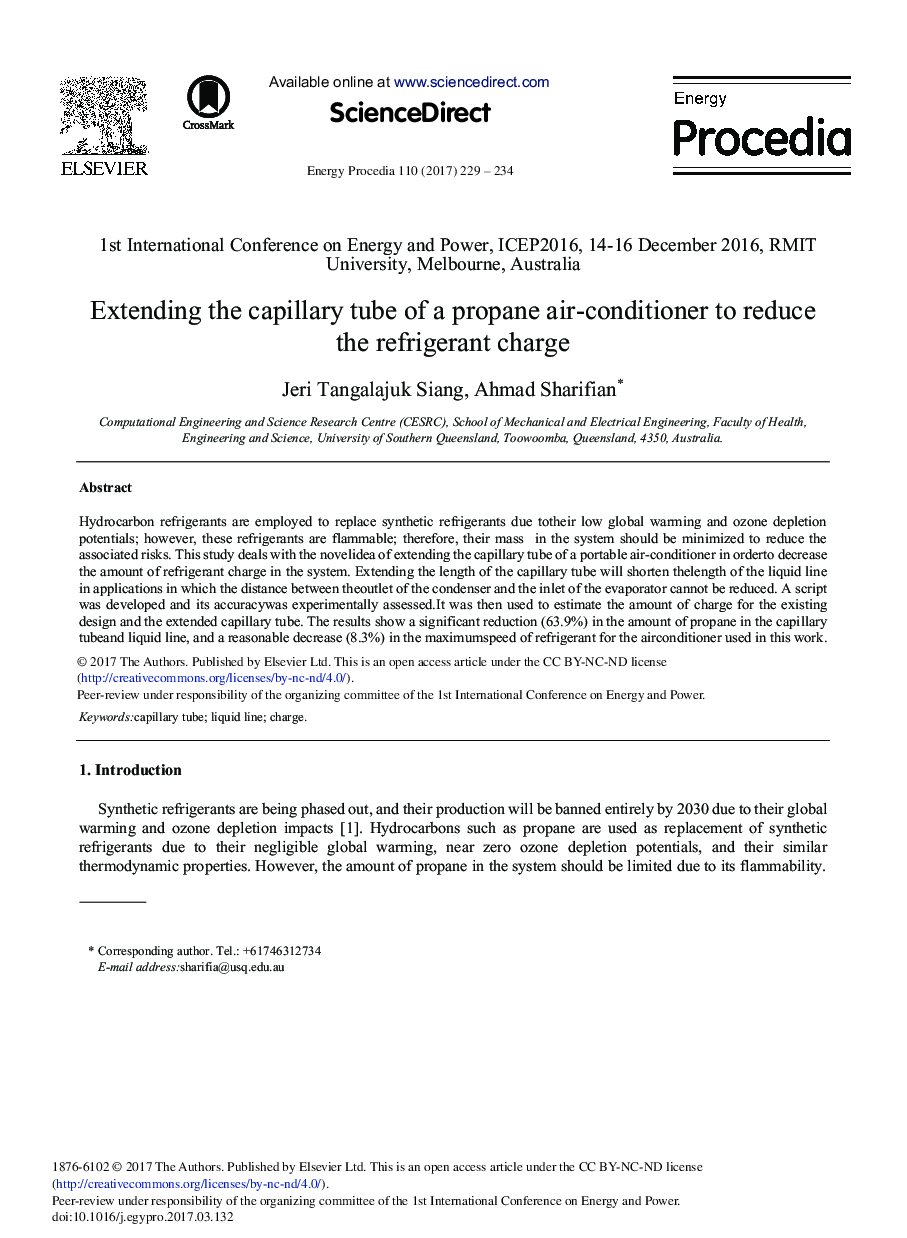| Article ID | Journal | Published Year | Pages | File Type |
|---|---|---|---|---|
| 5445731 | Energy Procedia | 2017 | 6 Pages |
Abstract
Hydrocarbon refrigerants are employed to replace synthetic refrigerants due totheir low global warming and ozone depletion potentials; however, these refrigerants are flammable; therefore, their mass in the system should be minimized to reduce the associated risks. This study deals with the novelidea of extending the capillary tube of a portable air-conditioner in orderto decrease the amount of refrigerant charge in the system. Extending the length of the capillary tube will shorten thelength of the liquid line in applications in which the distance between theoutlet of the condenser and the inlet of the evaporator cannot be reduced. A script was developed and its accuracywas experimentally assessed. It was then used to estimate the amount of charge for the existing design and the extended capillary tube. The results show a significant reduction (63.9%) in the amount of propane in the capillary tubeand liquid line, and a reasonable decrease (8.3%) in the maximumspeed of refrigerant for the airconditioner used in this work.
Keywords
Related Topics
Physical Sciences and Engineering
Energy
Energy (General)
Authors
Jeri Tangalajuk Siang, Ahmad Sharifian,
